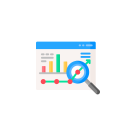-
Platform
Trending

Artificial Intelligence
Advancing workflow automation with Human-in-the-Loop AI
Explore how adding a human touch to AI-driven automation improves accuracy, adaptability, and trust
Learn moreChoose XDAS Go beyond automation and turn unstructured data into action
Go beyond automation and turn unstructured data into action
- Solutions
BY INDUSTRY
GenAI toolkit
GenAI Advantage for Enterprises
Drive large-scale efficiency with tailored GenAI automation expertise.
Explore nowsample heading
GenAI Power for SMEs
Simplify operations and scale smarter with affordable GenAI expertise.
Explore nowStart Watching Streamline data and turn ideas into workflows with a robust data automation suite
Streamline data and turn ideas into workflows with a robust data automation suite
- Products
- Resources
Collaborate now
 Empowering innovation through purposeful partnerships.
Empowering innovation through purposeful partnerships.
- Case studies
- About
- Request a Demo









































